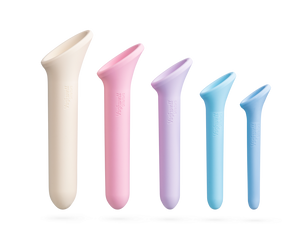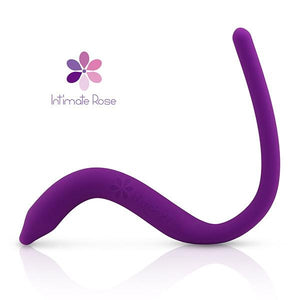Endometriosis Symptoms & Treatment

Endometriosis: Understanding the Condition and its Symptoms
Endometriosis is a chronic health condition characterized by the growth of uterine lining cells outside the womb. These cells, which usually form the inner layer of the uterus, can expand onto other pelvic structures like the ovaries and fallopian tubes. Each month, these cells thicken, break down, and bleed, mimicking the regular menstrual cycle. However, without an exit pathway, the blood leads to painful symptoms, inflammation, and the formation of scar tissue. This condition can result in intense pelvic and back pain, as well as complications with fertility. Affecting millions globally, endometriosis necessitates an individualized approach to management and treatment.
Endometriosis frequently leads to pelvic floor dysfunction, typically as a result of chronic pelvic pain that causes the pelvic floor muscles to become tense. To alleviate this type of pelvic issue, mastering reverse kegels is highly beneficial. Unlike standard kegels, which focus on muscle strengthening, reverse kegels emphasize relaxation of the pelvic floor muscles.
Understanding and performing reverse kegels can be more challenging compared to conventional pelvic floor exercises. However, there are various tools and methods available to aid in achieving a relaxed pelvic floor before symptoms of your endometriosis get worse, which can subsequently help in reducing pelvic floor pain. This article aims to spotlight some of the preferred techniques and tools for relaxing your pelvic floor, including the use of Dilators, Pelvic Wands, and specific functions available in Muscle Stimulation devices.
Symptoms of Endometriosis
Symptoms will vary depending on how sever the endometriosis is. Symptoms include:
- Severity varies individually.
- Common symptoms include:
- Persistent pelvic pain.
- Lower abdominal or back discomfort.
- Menstrual irregularities with heavy or painful cycles.
- Occurrences of irregular bleeding.
- Challenges with fertility.
- Discomfort during sexual activity.
- Uncomfortable sensations during bowel movements
- Presence of blood in your stool
Should you experience any of the mentioned symptoms and suspect endometriosis, scheduling an appointment with your general practitioner or pelvic health therapist is crucial to get started. They will conduct necessary diagnostic examinations, including a hysteroscopy—a procedure using a small camera to view the inside of your uterus—to determine the presence of endometriosis.
Treatment and Prevention for Endometriosis
Endometriosis treatment depends on the severity of your endometriosis and if you plan to have children in the future. Your physician may recommend temporary solutions such as painkillers and hormone treatment for mild cases.
Women with endometriosis frequently experience discomfort during intercourse and pelvic floor dysfunction. Pelvic physical therapy can be an effective method for managing pelvic discomfort, painful sexual experiences, and issues related to pelvic floor dysfunction stemming from endometriosis. Moreover, various home remedies may provide relief for pelvic and abdominal pain associated with this condition.
Regular physical activity and stretching
including soft yoga, Pilates, and aerobic exercises, may be beneficial in mitigating inflammation and alleviating discomfort. When you exercise, your body releases endorphins, which are natural mood lifters that may also aid in managing symptoms associated with endometriosis.
A modified version of the Child’s Pose in yoga, which includes the use of a pillow, can be particularly soothing. This pose promotes relaxation in the muscles of the pelvic floor as well as those in the back and hips, making it a comforting choice during episodes of cramping and pelvic pain.
The Deep Squat position, which can be executed with the head raised or with the chin drawn inward, is another effective pose for releasing tension in the pelvic floor muscles. This pose aids in opening the pelvis and can provide relief from tightness and discomfort.
Medical Dilators for Endometriosis

To mitigate discomfort during sexual intercourse, using medical dilators, also known as vaginal trainers, can be beneficial. These devices aid in maintaining or restoring the vaginal width, depth, and elasticity, facilitating not only sexual activity but also the use of tampons, undergoing medical examinations, and other similar necessities.
Establishing a regular and consistent routine with these dilators is crucial for reducing pain associated with vaginal penetration.
Practicing breathing while using training with vaginal dilators is imperative. Focusing on expanding the rib cage and belly can significantly enhance overall blood circulation, alleviate stress on the pelvic floor muscles, and diminish tension in the neck, head, and shoulders. It is often advantageous to combine this type of breathing exercise with vaginal dilator training.
Pelvic Wands for Endometriosis

The Intimate Rose Pelvic Wand, a patented tool, is designed to help alleviate pain by targeting trigger points and tender points in the pelvic floor muscles. Trigger points are specific spots in muscles that are sensitive or painful when pressed, often identified by tight bands or "knots" in the muscle, and they can cause a referred pattern of pain.
Tender points, on the other hand, refer to areas in the muscle, muscle-tendon junctions, bursae, or fat pads that are particularly sensitive. These points are frequently found in chronic pelvic pain conditions, including endometriosis. The Intimate Rose Pelvic Wand is specially crafted to address these painful areas effectively.
Pelvic Stimulation Devices
When most people think of Pelvic STIM devices or Pelvic toners you are thinking about tightening your pelvic floor not relaxing it. There If you suffer from chronic endometriosis pain or pelvic pain, you can assist your muscles to relax and target pelvic pain with the pain program on the Kegel8 Ultra created by Amanda Savage, a world renowned pelvic health therapist in the United Kingdom. This program operates similarly to others but utilizes a very low electrical frequency. This gentle approach is designed to train your muscles to relax more easily.
The Kegel8 Ultra can be used with skin electrodes if inserting a sensor is too painful
In more severe cases of endometriosis, the doctor may recommend surgery.
- Laporoscopy: Doctors will use a tiny camera to look inside the womb, and will use delicate instruments to destroy patches of endometriosis. This is successful in cases of mild endometriosis and success rates are good.
- Hysterectomy: Hysterectomy is sometimes the only option in more serious cases of endometriosis. This is only when other endometriosis treatment options have been exhausted.

